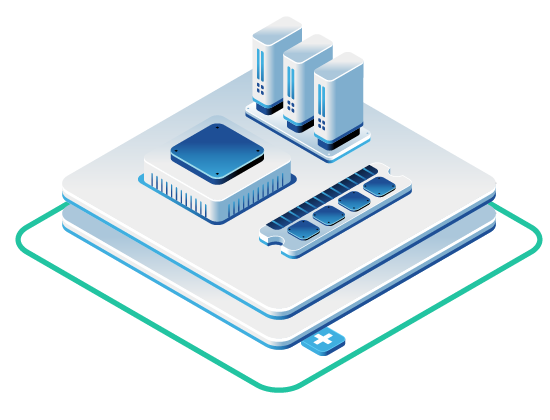![[RI] Your Cloud Bill Isn't Just a Number, It's Your Gross Margin in Disguise](https://openmetal.io/wp-content/uploads/2025/11/RI-Your-Cloud-Bill-Isnt-Just-a-Number-Its-Your-Gross-Margin-in-Disguise-1024x536.png)
Runway Intelligence is OpenMetal’s executive insight series for late-stage startups and their investors, exploring how cloud economics, infrastructure design, and operational strategy shape valuation, margins, and time to exit.
Key Takeaways
- Gross margin has replaced growth rate as the primary valuation driver—companies with margins above 80% command 38% higher revenue multiples than those below that threshold
- Infrastructure costs directly translate to margin points: a $1M annual cloud bill on $65M ARR equals roughly 1.5% margin drag that affects your valuation story
- FinOps has matured from tagging and alerts to financial storytelling—translating infrastructure decisions into margin recovery, variance reduction, and runway extension
- Rate optimization (commitment-based discounts, fixed-cost models) delivers immediate financial results versus usage optimization that requires months of engineering work
- Strategic infrastructure decisions can recover 0.5-1.5 percentage points of gross margin, extending runway by weeks and improving investor confidence at exit
Your board isn’t asking about cloud spend anymore. They’re asking about gross margin. They’re asking about burn multiple. They’re asking how many months of runway you’ve bought with that last raise—and whether your infrastructure strategy is eating into all three.
For late-stage startups, the conversation has shifted. What used to be an engineering line item is now a boardroom metric. Cloud cost optimization priorities have fundamentally changed, with reducing waste and managing commitment-based discounts now topping the list of concerns for financial leaders. This isn’t just about turning off unused instances anymore. This is about reclaiming margin points that directly impact your valuation story.
Why Gross Margin Became the Board’s Favorite Metric
The public markets rewrote the playbook. Companies with gross margins above 80% now command median revenue multiples of 7.6x, compared to just 5.5x for those below that threshold. That’s not a rounding error—that’s a 38% valuation premium tied directly to how well you manage your cost of goods sold.
Acquirers and late-stage investors see gross margin as proof of operational discipline. It signals that you know how to scale without proportionally scaling costs. SaaS companies demonstrating efficient, high-margin models are commanding premium valuations, while those with bloated cost structures face discounted offers or limited buyer interest.
For context: a company running $65M in ARR with a $1M monthly cloud bill carries roughly 18.5% of revenue as infrastructure COGS. That translates to an immediate 1.5 percentage point drag on gross margin—before you account for support, customer success, or any other delivery costs. Fix that cloud spend, and you’re not just saving money. You’re recovering margin that changes how the market values your business.
From Tagging to Financial Storytelling
The first generation of FinOps taught us to tag resources, set alerts, and chase down zombie instances. That was table stakes. The new generation demands financial fluency—the ability to translate infrastructure decisions into the language your CFO speaks: margin impact, variance reduction, and runway extension.
Modern cloud financial management isn’t about dashboards full of colorful pie charts. It’s about showing your board a single number: how much gross margin you recovered this quarter, and how many months of runway that just bought you.
Organizations are shifting from usage optimization to rate optimization—from engineering-heavy workload changes that take months to implement, to commitment-based discount strategies that deliver immediate financial results. This isn’t laziness. It’s strategic prioritization. When your runway clock is ticking, you need margin recovery measured in weeks, not years.
The Infrastructure-to-Margin Translation
Here’s how the math works in practice:
A mid-stage SaaS company spending $1.2M annually on public cloud egress faces unpredictable bills that swing 15-20% month over month. That variance makes forecasting a nightmare and gross margin a moving target. Switch to a predictable-cost model—whether through committed use discounts, reserved instances, or alternative infrastructure platforms with fixed bandwidth pricing, and you can cut that egress spend by up to 50% while eliminating variance entirely.
Result: You just recovered 0.9 percentage points of gross margin. On $65M ARR, that’s $585,000 back in your pocket annually, enough to extend runway by nearly two weeks for a company burning $2M per month.
But the real value isn’t just the cash. It’s the story you tell investors. “We reduced infrastructure COGS by 50% and improved gross margin by nearly a full point” sounds a lot different than “we saved some money on cloud bills.” One is a financial win. The other is an engineering footnote.
Predictable-cost infrastructure models—whether through long-term commitments on hyperscalers or dedicated private cloud platforms—remove the variable billing complexity that makes traditional consumption-based pricing so difficult to model. For CFOs building financial models for fundraising or exit, that predictability transforms cloud spend from a liability into a controlled input.
The Margin Recovery Playbook
Want to turn infrastructure into a margin story? Start here:
Rebase high-egress workloads to capacity-based pricing
If you’re moving data at scale—streaming, media delivery, API-heavy architectures—public cloud egress charges will destroy your margins. Move these workloads to infrastructure with fixed bandwidth costs, where scaling doesn’t mean linear cost increases.
Lock in commitment-based discounts strategically
Organizations with larger cloud spend achieve better savings outcomes from managing commitment-based discounts due to access to more resources and expertise. But don’t just buy Reserved Instances blindly. Model them against your burn rate and growth projections. A three-year commitment looks smart today but catastrophic if you’re planning an exit in 18 months.
Deploy automation that prevents over-provisioning before it happens
Teams are prioritizing automation to scale efficiently and do more with less, though adoption of fully automated financial management tools remains early-stage. The goal isn’t just visibility—it’s guardrails that stop your teams from spinning up resources that tank your margin before anyone notices.
Align infrastructure decisions with financial milestones
Your CTO needs to know when the next board meeting is, and your CFO needs to understand when the next major product launch will spike compute costs. When these calendars align, you can time infrastructure optimizations to hit right when board decks are being built.
The compounding effect is where this gets interesting. A single percentage point of margin recovery doesn’t just improve this quarter’s P&L. It cascades forward. Better margins mean lower burn multiples. Lower burn multiples mean extended runway. Extended runway means better negotiating position in your next fundraising round—or better valuation in an exit scenario.
The Cloud Margin Bridge
Think of your infrastructure optimization as a bridge connecting four financial outcomes:
Spend reduction leads to margin recovery, which creates runway extension, which builds valuation confidence.
Each step reinforces the next. Cut $500K in annual cloud spend, and you’ve recovered margin. That margin improvement drops straight to your burn rate, extending runway. That extended runway changes the urgency of your next fundraise—or positions you for a better exit multiple.
Companies demonstrating sustainable, metrics-driven growth with strong gross margins above 80% and efficient cash flow are earning valuations more than double the industry median. The path to that premium starts with treating infrastructure as a margin lever, not just an operational expense.
OpenMetal: Fixed-Cost Infrastructure for Margin Recovery
While the strategies above work across any infrastructure provider, OpenMetal offers a specific solution designed for late-stage startups focused on margin recovery and financial predictability.
OpenMetal provides hosted private clouds built on open-source technologies (OpenStack and Ceph) that deliver predictable, fixed-cost infrastructure. Unlike hyperscaler variable billing based on requests, usage, and unpredictable egress fees, OpenMetal’s approach enables CFOs and CTOs to model true cost of goods sold (COGS) with stability.
For example, a company spending $1M per month on public cloud egress could reduce this by up to 50% through 95th percentile bandwidth pricing and dedicated network capacity on OpenMetal hardware. This translates into immediate gross margin recovery and reduced burn multiple—without requiring months of engineering rearchitecture.
OpenMetal’s transparent pricing model and private cloud delivery restore alignment between engineering efficiency and financial planning, making infrastructure a controllable lever for valuation growth. You get the same infrastructure flexibility as hyperscale clouds—APIs for automation, orchestration for workloads, integration with CI/CD pipelines—without the unpredictable costs.
Companies typically see infrastructure cost reduction of 20-40% when moving predictable workloads to OpenMetal’s platform. For a startup spending $100K monthly on cloud, that’s $20-40K in savings—potentially extending an 18-month runway to 22-24 months without raising additional capital. More importantly, it’s margin points recovered that change your financial story to investors.
When Your Board Asks About Burn Rate, Show Them Margin Recovery
The next time your board reviews financials, don’t lead with cloud cost savings. Lead with gross margin recovery.
Tell them you reduced infrastructure COGS by X%, improved gross margin by Y percentage points, and extended runway by Z weeks. Show them the variance you eliminated and the predictability you built into your financial model. Demonstrate how your infrastructure strategy directly impacts the valuation metrics that matter in your next fundraise or exit.
That’s the language they understand. That’s the story that changes how they see your cloud strategy—not as an IT problem, but as a financial lever.
Because your cloud bill was never just a number. It was always your margin, hiding in plain sight. Now you know where to find it—and how to get it back.
FAQ
Q: How does gross margin recovery differ from traditional cloud cost optimization?
Traditional cloud optimization focuses on reducing spend through resource rightsizing, eliminating waste, and negotiating discounts. Gross margin recovery reframes these actions as financial storytelling—translating infrastructure decisions into percentage points gained on your P&L. Instead of reporting “we saved $50K monthly,” you tell your board “we recovered 0.8 points of gross margin, extending runway by six weeks.” The actions may be similar, but the narrative shifts from operational efficiency to strategic finance.
Q: What infrastructure costs have the biggest impact on gross margin?
Data egress and bandwidth costs often deliver the highest margin recovery potential because they scale with usage but remain largely invisible until they become material. A company moving significant data—whether for API traffic, media streaming, or cross-region replication—can see egress costs reach 15-30% of total infrastructure spend. Switching to predictable bandwidth models or optimizing data architecture can recover 0.5-1.0 percentage points of margin. Compute and storage optimization typically follow, especially for companies over-provisioning for peak loads that rarely materialize.
Q: At what revenue stage should we prioritize margin recovery over growth?
The inflection point typically occurs between $30-50M ARR when investors shift focus from pure growth metrics to unit economics and path to profitability. Before this stage, growth usually matters more than efficiency. After this stage, companies need to demonstrate they can scale margins alongside revenue. However, if you’re within 12 months of a fundraising round or exit discussion, margin recovery becomes immediately relevant regardless of revenue stage—it directly impacts your valuation multiple and negotiating position.
Q: Won’t focusing on infrastructure costs slow down product velocity?
Not if approached strategically. Most margin recovery happens through rate optimization—switching to reserved capacity, commitment-based discounts, or fixed-cost infrastructure—rather than usage optimization that requires engineering changes. These financial decisions don’t touch production code and can be implemented in parallel with product development. When architectural changes are needed, phase them during natural breaks in your product cycle, starting with non-critical workloads while maintaining production stability.
Q: How do I know if our infrastructure costs are affecting our valuation?
Monitor infrastructure costs as a percentage of revenue. For SaaS companies, healthy infrastructure COGS typically range from 8-15% of revenue. If you’re above 20%, it’s likely affecting how investors view your business. Second indicator: compare your gross margin to industry benchmarks. SaaS companies with gross margins below 70% face valuation pressure—the median multiple drops from 7.6x for companies above 80% margins to 5.5x for those below. If infrastructure is pushing your margins down, it’s costing you valuation points.
Works Cited
- CloudKeeper. “2024 State of FinOps Report: Key Trends in Cloud FinOps.” CloudKeeper Blog, November 22, 2024, https://www.cloudkeeper.com/insights/blog/2024-state-finops-report-key-trends-cloud-finops.
- FinOps Foundation. “Reducing Waste and Managing Commitments Top Key Priorities for FinOps Practitioners.” FinOps Insights, https://www.finops.org/insights/key-priorities-shift-in-2024/.
- ProsperOps. “Our Take On the 2024 State of FinOps Report.” ProsperOps Blog, March 25, 2025, https://www.prosperops.com/blog/our-take-on-the-2024-state-of-finops-report/.
- Software Equity Group. “Public SaaS Company Valuations and What They Mean for Private Companies.” Software Equity Group Blog, March 19, 2025, https://softwareequity.com/blog/public-saas-company-market-valuations/.
- Software Equity Group. “SaaS Multiples 2025: What Does the Future Look Like for M&A Market Valuation?” Software Equity Group Blog, April 9, 2025, https://softwareequity.com/blog/ma-market-outlook/.


































